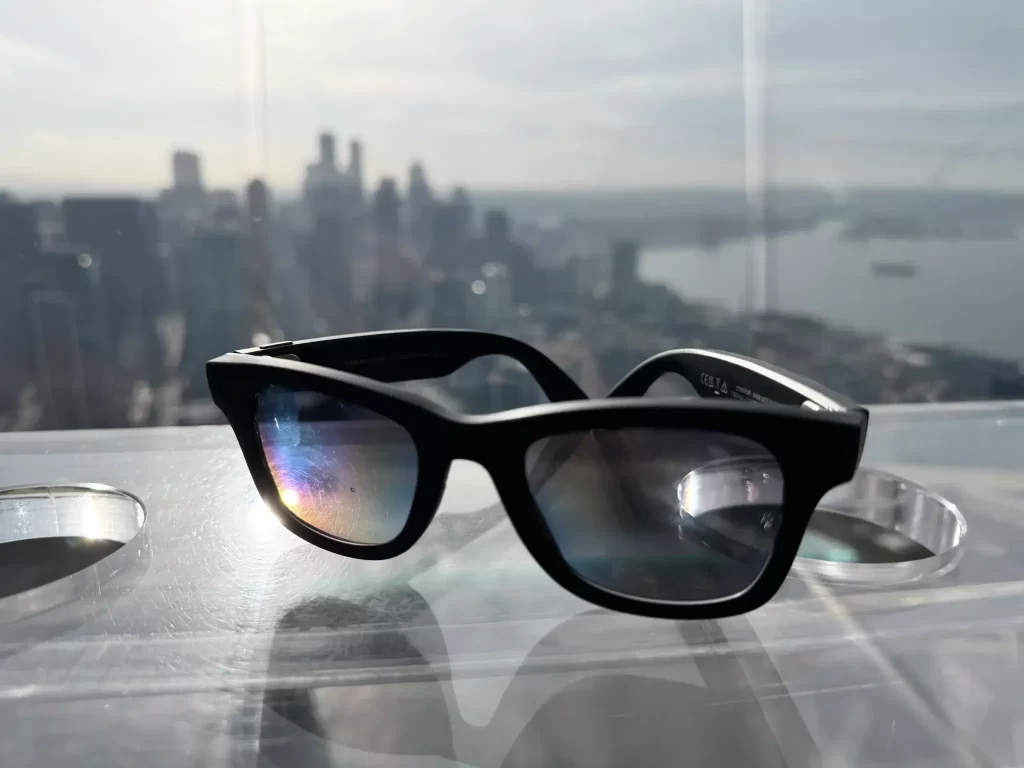Ray-Ban Meta glasses represent a significant leap forward in the world of smart eyewear. Born from a collaboration between Meta (formerly Facebook) and Luxottica, this new generation of smart glasses, launched in September 2023, combines the classic aesthetics of Ray-Ban with cutting-edge technology. The integration of Meta AI into these glasses has opened new avenues for user interaction, making them not just a fashionable accessory but a versatile tool in everyday life. As Meta AI begins its rollout in European countries like France, Italy, Ireland, and Spain, it’s worth exploring what makes these glasses a game-changer.
The Evolution of Ray-Ban Meta Glasses
The previous iteration of Meta’s smart glasses, known as Ray-Ban Stories, received mixed reviews. They were seen as a novelty rather than a must-have gadget due to their limited functionality and performance. However, with the latest Ray-Ban Meta glasses, Meta has made significant enhancements in both hardware and software. The inclusion of Qualcomm’s AR1 Gen 1 platform marks a major upgrade, providing more processing power, better performance, and a smoother user experience. The new generation also features an improved camera, enhanced connectivity, and the powerful Meta AI assistant, setting a new standard in smart eyewear.
Key Features and Upgrades
1. Enhanced Hardware Specifications
One of the most significant changes in the Ray-Ban Meta glasses is the hardware upgrade. They now feature Qualcomm’s AR1 Gen 1 chip, a considerable improvement over the previous Snapdragon platform. This new chip enhances the glasses’ ability to perform various tasks without needing constant connectivity to a smartphone. Here’s a breakdown of the key hardware upgrades:
- Improved Camera: The glasses now boast a 12 MP camera capable of capturing high-resolution photos and 1920 x 1440 video. This is a substantial upgrade from the 5 MP camera and 780p video of the previous model.
- Increased Storage: Storage capacity has been boosted from 4 GB to 32 GB, allowing users to store more than 100 short videos or 500+ photos directly on the device.
- Enhanced Connectivity: With support for Wi-Fi 6 and Bluetooth 5.3, the glasses offer faster and more stable connections, crucial for streaming and sharing content in real-time.
- Battery Life: The glasses now come with a charging case that provides up to 36 hours of battery life, a 50% increase from the previous generation.
2. Meta AI Integration
The integration of Meta AI is the most notable addition to the Ray-Ban Meta glasses. This voice-activated assistant can handle a variety of tasks, from answering general questions to sending messages, making calls, and providing real-time information. The AI assistant’s capabilities are continually expanding, making the glasses increasingly useful in daily scenarios.
For instance, users can ask Meta AI for recommendations, such as “Hey Meta, what’s the best coffee shop nearby?” or “What are some unique gift ideas for a friend’s birthday?” The voice recognition system, enhanced by a five-microphone array, ensures that commands are understood even in noisy environments. This makes the glasses an ideal companion for hands-free interactions on the go.
3. Enhanced Multimedia Capabilities
The Ray-Ban Meta glasses excel in multimedia functionalities. The improved camera sensor not only captures higher-quality photos and videos but also features better video stabilization, making it easier to shoot smooth footage while walking or moving. The audio experience has also been upgraded, with 50% louder speakers and deeper bass. This ensures clearer audio during calls and while listening to music.
The inclusion of Spotify Tap further enhances the multimedia experience. This feature allows users to quickly play a song based on their listening preferences by simply tapping the glasses. Additionally, with live-streaming capabilities to platforms like Facebook and Instagram, the glasses appeal to influencers and content creators, offering a unique way to engage with their audiences in real-time.


The Introduction of Meta AI in Europe
Meta AI is now available on Ray-Ban Meta glasses in several European countries, including France, Italy, Ireland, and Spain. This rollout marks a significant step in Meta’s strategy to expand its AI-powered ecosystem across different regions. The assistant supports multiple languages, including French, Italian, Spanish, and English, making it accessible to a broader audience.
However, some features, such as the multimodal capabilities that allow the AI to provide information based on what the camera sees, are still limited to the US, Canada, and Australia. This limitation is primarily due to the complex regulatory landscape in Europe, particularly around data privacy laws like GDPR. Meta is working to address these regulatory challenges, aiming to expand these advanced features to more countries in the future.
Privacy Concerns and Regulatory Challenges
The integration of AI and camera capabilities into smart glasses raises several privacy concerns. European regulators, in particular, have expressed reservations about how Meta handles user data. The use of public data from platforms like Instagram and Facebook for AI training has been a contentious issue under GDPR regulations. Meta has faced scrutiny and has had to pause certain data practices while negotiating compliance with European laws.
Despite these challenges, Meta has made efforts to address privacy concerns, such as including visible indicators on the glasses when the camera is recording. Additionally, the glasses require user consent for features like live streaming, aiming to provide transparency and control over data usage.
User Experience and Everyday Functionality
Feedback from early adopters of the Ray-Ban Meta glasses has been largely positive, highlighting the improved design, enhanced functionalities, and the seamless integration of Meta AI. Users appreciate the lightweight build (only 48 grams) and the stylish appearance, which closely resembles traditional Ray-Ban sunglasses, making them less conspicuous as a tech device.
The practical applications of these glasses are diverse. For example, the ability to receive and respond to messages through voice commands without needing to pull out a smartphone is a significant convenience. The glasses also cater to users who prefer an open-ear audio experience, making them a safer alternative to earbuds in situations where situational awareness is important, such as walking or driving.
Future Prospects: The Road to AR Glasses
While the current iteration of Ray-Ban Meta glasses does not feature a display, it serves as a stepping stone toward augmented reality (AR) glasses. Meta’s partnership with MediaTek for developing custom SoCs for future AR glasses indicates the company’s long-term vision for this product line. The potential addition of machine vision and object recognition capabilities could transform these glasses into a powerful tool for real-time translation, navigation, and even aiding individuals with visual impairments.
As technology progresses, we can expect future models to incorporate more advanced features, possibly including a heads-up display (HUD) for AR experiences. This could unlock a myriad of applications, from interactive gaming to enhanced navigation and real-time data overlay, revolutionizing the way users interact with their environment.
Value Proposition and Market Position
At a starting price of $299, the Ray-Ban Meta glasses offer a compelling value proposition. They combine the appeal of premium Ray-Ban eyewear with the added functionalities of a smart device, including high-quality audio, video capture, and voice-activated assistance. For consumers looking for a stylish yet functional piece of wearable technology, these glasses present a viable alternative to other smart devices like earbuds or smartwatches.
The customization options, including various frame styles, colors, and lens types (such as transition lenses), add to their appeal, allowing users to personalize their glasses to fit their lifestyle and preferences.
Conclusion
The Ray-Ban Meta glasses represent a significant advancement in the field of smart eyewear, blending classic style with modern technology. With improved hardware, enhanced AI capabilities, and a focus on user experience, they have set a new benchmark for what smart glasses can achieve. While there are still challenges to overcome, particularly in terms of privacy and regulatory compliance, Meta’s commitment to innovation and expansion suggests a bright future for this product line.
As the rollout of Meta AI continues in Europe and more features become available globally, the Ray-Ban Meta glasses are poised to become a staple in the wearable tech market. For those looking to experience the future of hands-free, voice-activated technology, these glasses offer a glimpse into the possibilities of augmented reality and the next generation of personal computing.














